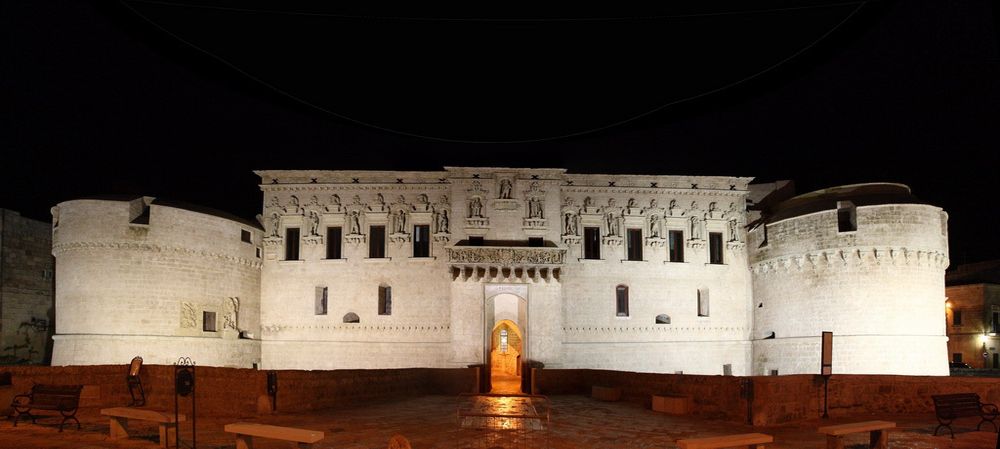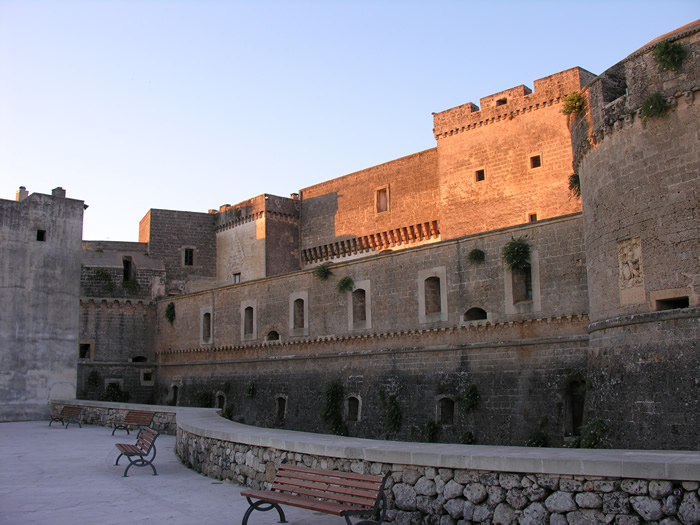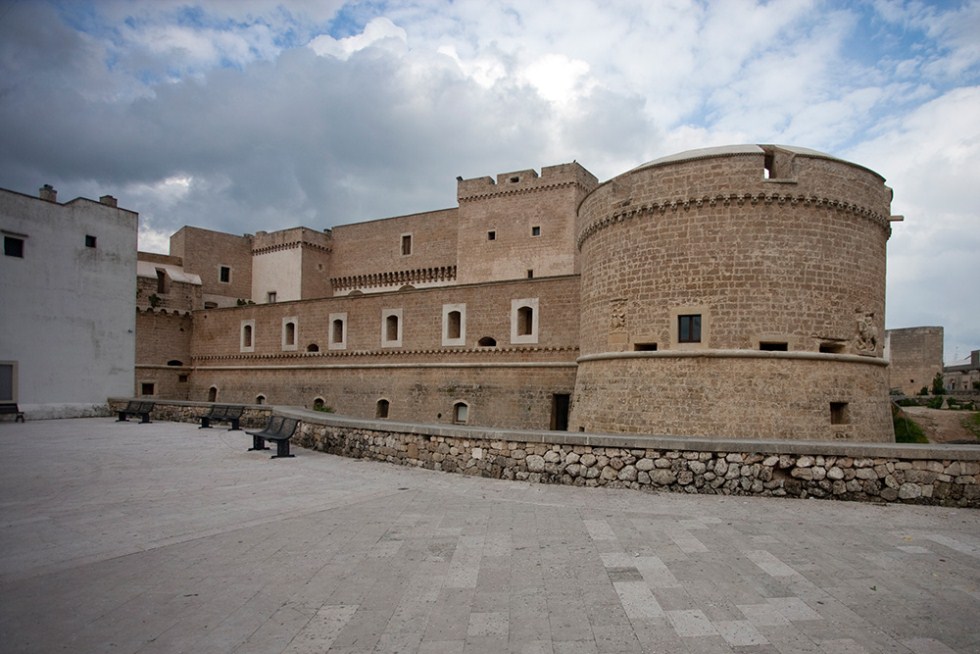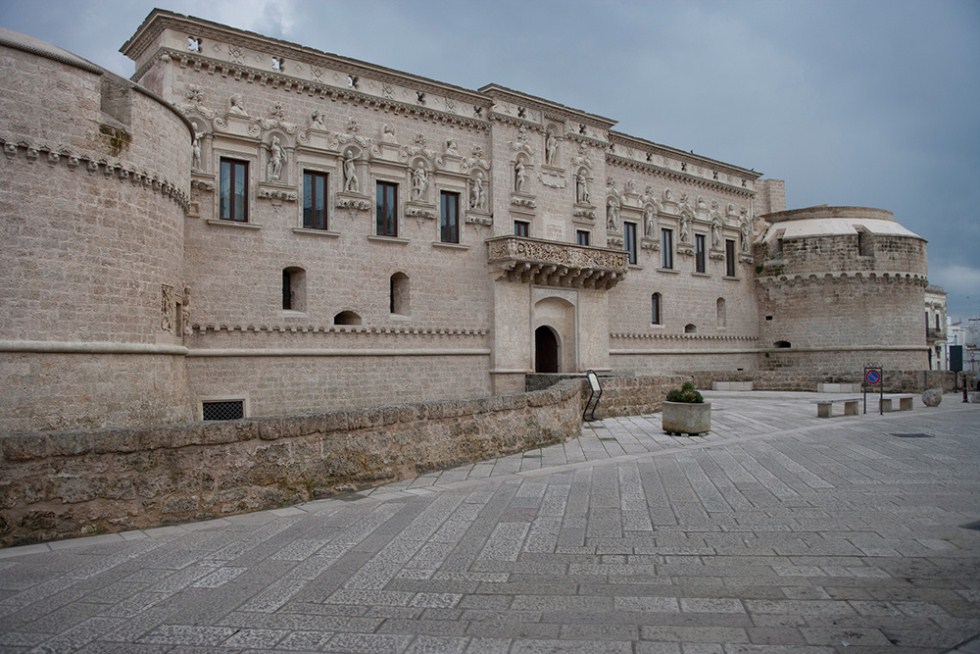Corigliano d'Otranto
Corigliano d' Otranto is a southern Italian village with 5765 inhabitants ( 31 December 2012) in the province of Lecce in the Italian region of Puglia.
In the central part of the lower Salento peninsula, located about 25 km south of the provincial capital, the resort part of Salento, a linguistic island is an archaic modern Greek dialect is spoken with Old and Middle Greek and Latin elements, also called Griko or Greco. In this idiom means the city Choriàna or Koriana. In the Salento dialect, however, is the name of the city Curiànu.
- 2.1 toponymy
- 3.1 Religious Architecture 3.1.1 Main Church ( Chiesa Madre )
Geography
The territory of Corigliano d' Otranto, which extends with its 28 km ² over the central part of the province area is completely flat.
The village rises to 97 m above sea level, but the municipality is 73-109 m above sea level located in a holistic height difference of 36 meters. The surrounding area of Corigliano is mainly cultivated with olive groves. The plant species which are covering the area also, the olive tree, the oak and pine.
The municipal boundaries abut the north by the municipalities Soleto, Zollino and Martano, on the east by the municipalities Castrignano de ' Greci and Melpignano, to the south by the municipalities Maglie and Cutrofiano, and to the west by the municipalities Sogliano Cavour and Gala Tina.
Climate
The nearest weather station is that of Lecce Galatina. Climate of Corigliano d' Otranto is typically Mediterranean, but with continental peaks. The meteorological data show that the winters are not very cold; nevertheless frequently occur cases of intense cold with night frost in January and February. Summers are hot, humid and extremely dry. The precipitates, which concentrate mainly in the autumn and the winter time, amount annually to an average of 639 mm.
History
The origins of Corigliano d' Otranto are uncertain. The village could have Greek roots, as it seems to have originated in the time of Magna Graecia; but its origins may also be in the Roman period or even a work of Messapians, the original inhabitants of this region.
That in Corigliano settled the carrier of a prehistoric culture, which is attested by the remains of a Specchia in the localities Serra and Murica. From the Roman period comes one of the goddess Vesta temple sacred and the spatial planning structure of the old town which, as clearly seen between Via Capiterra and Via Cavour, from contract sections which are constructed on the Roman Actus, is. The development of Corigliano had the Basilian monastery of St. George, called Sinòdia, which was built in the 9th century. The convent school taught Greek language and Eastern Roman culture, and left numerous Greek codices. It fell into disrepair in the 16th century as a result of the destruction of the monastery of San Nicola di Casole in Otranto, from which it was dependent. The first historical evidence dates from 1192, when King Tancred of Sicily, the area awarded to Pietro Indini as a fief.
Toponymy
Its name is from the word incorrectly cuore (heart), which emerges through assonance as an icon in urban crest derived. According to another theory, the name of the city from a hypothetical centurion Corelius infers that should have been allocated the territory after the Roman conquest. More likely is that from the mid Greek term χωρίον ( chorion ) for " settlement " or " village", has subsequently formed by alteration of name Corigliano.
Monuments and Landmarks
Religious Architecture
Main church ( Chiesa Madre )
San Nicola, which is Chiesa Madre of Corigliano d' Otranto directly at the northern end of Via Chiesa, where formerly one of the ancient entrance gates opened toward the city, the local Greek dialect "Upper door " or " Anuporta " (from the Greek Ἀνωπόρτα ) called, and not far from the aligned to the church bell tower facade. This was, as can be seen carved on the window of the second order in Greek -digit year number, built in the years 1467-68. Originally served as inserted in the medieval city walls tower as a watchtower. Typical medieval are located on the four corners of the frame of the 2nd order of the tower lions and the three arches of the mated Gurtgesimses, the leaf-shaped decorations and all the other decorative elements of the facade. At the height of the last order, where the center supports the mullioned windows were subsequently removed to make the bells place, the conversion of the watchtower to a bell tower is best seen.
The Chiesa Madre was built in 1622 at the site of a pre-existing religious building, of which some components such as the entrance portal dated 1573 are obtained with the statues of the Saviour, the Mother of God and of the patron saint Nicholas of Myra. The building is constructed in the form of a Latin cross with directed east apse. It is characterized by a considerable height, whose impression is reinforced reproducing by the massiveness of the cover of the nave pillars and the geometry of the built in Lecce style vault leaf-shaped cornice. Over the centuries the church has undergone numerous transformations, one of which was one of the more important was the realization in 1878 of the floor mosaic. Analog modeled on the Cathedral of Otranto, it represents the subject of the tree of life with its various biblical scenes dar. Renewed repair work on the ground have brought an underground cemetery to light.










